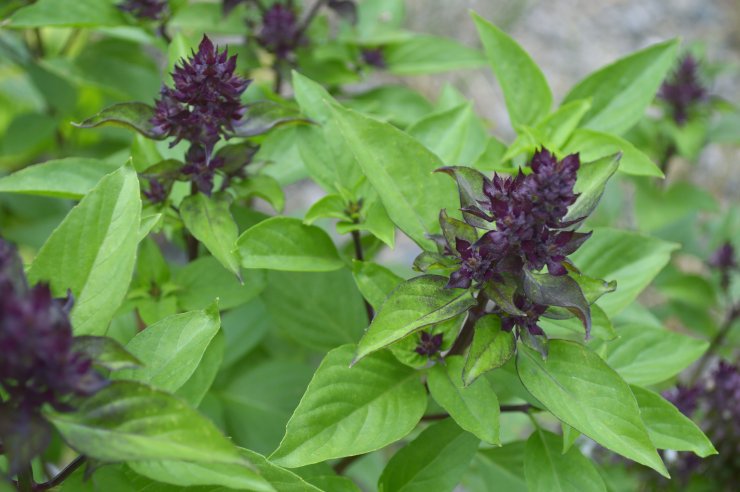
Thai Basil

Thai Basil
Thai basil has a sweet, anise-like scent and hints of licorice, along with a slight spiciness that is lacking in traditional sweet basil, although Thai basil is simply another variety of sweet basil. Native to Southeast Asia, Thai basil has been specifically cultivated for its distinctive spicy flavor and its ability to remain stable under high or extended cooking temperatures, unlike traditional sweet basil. Thai basil plants are sturdy and compact and require well-drained soil.
Sun Exposure
- Full sun (six to eight hours)
Soil pH
- 6.5 to 7.5
Hardiness Zones
- 4 to 8 as an annual
- 9 to 11 as a perennial
Spacing
- 8 to 18 inches apart
Moisture
- Water 1 inch per week
- Keep soil evenly moist but not soggy
Notes
- Grows up to 1 1/2 feet tall
- Shiny green, slightly serrated, narrow leaves
- Purple square stem with pink-purple flowers that should be pinched to prevent the leaves from becoming bitter
- Can be grown from seeds or cuttings
- Great for cooking in Asian dishes, such as Thai, Vietnamese, Lao, and Cambodian dishes—think curries and drunken noodles
Do you grow Thai basil? If so, please tell us your top tips for ensuring a bountiful harvest and how you cook with Thai basil.



